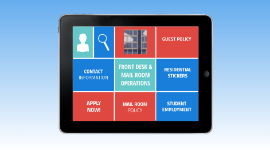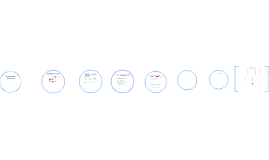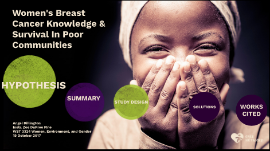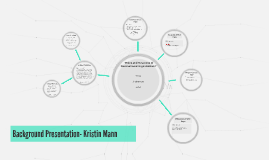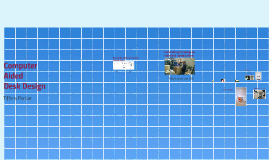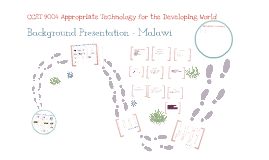Desk Study Presentation
Transcript: Angel Billington Instr. Zoe DuPree Fine Desk Study Presentaion WST 3324 Women, Environment, and Gender 19 October 2017 Women's Breast Cancer Knowledge & Survival In Poor Communities HYPOTHESIS Hypothesis Women in underprivileged communities are suffering from breast cancer at higher rates than women who are better off. Lack Of Knowledge Lack Of Knowledge "Women in many communities have very little knowlege about breast cancer or it's risks. An example of this can be seen in the fact that “approximately 76.4 percent of Sub Saharan African women have little to no knowledge about breast cancer.” (Akuoko 10) Low Rate of Survival Low Rate of Survival , Latina women “...experience lower rates of 5-year cancer-specific survival” (Molina 345). These instances can be remedied if the patient catches the breast cancer early enough. Wrong Information About Breast Cancer Sadly, many women across all different groups have been poorly educated about breast cancer. “77.1% in the rural and 74.6% in the urban setting believed placing money in the bra to be a risk factor for breast cancer” (Munyaradzi 821). Wrong Information About Breast Cancer SUMMARY SUMMARY “Differences in clinical and sociodemographic factors between African American and non-Hispanic white breast cancer patients contribute to the disparities in survival.” (Komenaka). African American women “..have a higher breast cancer mortality rate than any other racial or ethnic group at every age” (Conway-Phillips 97). When studying women living in sub saharan Africa (one of the poorest regions in the world) it was found that the “Majority of the participants involved in all included studies had little or no knowledge of mammography and BSE”. (Akuoko The combined researchers conducted a series of tests and studies in order to test this hypothesis. The main Idea is to better understand the extent of women's knowledge within different types of communities. STUDY DESIGN Study Designs These researchers used a variety of methods in order to study this topic. Most of them were split into smaller segments. “Within each stage of the cancer continuum, studies were categorized by four foci: study design, the type of intervention, who implemented the intervention and study outcomes” (Molina). This study used a short questionaire of 3 questions in order to get data from the sample group. “Women were recruited in the outpatient department of the hospital.” (Muyaradzi 3) This study observed a total of 30,594 registries. “...we examined breast cancer risk in relation to the women’s and their husbands’ insecticide use using Cox proportional hazards regression to estimate adjusted hazard ratios (HRs) and 95% confidence intervals” (Engel 1) " TESTIMONIALS " " TESTIMONIALS " SOLUTIONS Breast cancer does not affect all women the same. When social and economic factors are taken out of the picture, data shows that there is nothing fundamentally different about any two women that would cause one to die from breast cancer at a faster rate than the other. SOLUTIONS According to Komenaka, “After adjustment for clinical and sociodemographic factors, the effect of race on survival was no longer statistically significant.” Even amongst women who have a history of breast cancer in their family, certain factors lead certain women to increase their mortality rate. "Even amongst women who have a history of breast cancer in their family, certain factors lead certain women to increase their mortality rate. “The African American women involved in the study were very knowledgeable about breast cancer and factors associated with increased risk and their family health history. However, the extent to which they discussed their concerns with health care providers and the extent to which they engaged in recommended breast health practices varied” (Richards 112). "The systemic factors assessed often emphasized increased access to care; therefore, it is not surprising that they are strong motivators of behavior change . These included reducing the costs for Latinas to be screened by providing vouchers to defray expenses, as well as patient navigation that provided information and activities to support resolution of an abnormal screening test and initiate treatment." (Molina) WORKS CITED Akuoko, Cynthia Pomaa, et al. “Barriers to Early Presentation and Diagnosis of Breast Cancer among African Women Living in Sub-Saharan Africa.” Plos One, vol. 12, no. 2, 2017, doi:10.1371/journal.pone.0171024. Engel, Lawrence S.1, Larry.Engel@unc.edu, et al. "Insecticide Use and Breast Cancer Risk among Farmers' Wives in the Agricultural Health Study." Environmental Health Perspectives, vol. 125, 06 Sept. 2017, pp. 1-10. EBSCOhost, doi:10.1289/EHP1295. Komenaka, I. K., et al. "Race and Ethnicity and Breast Cancer Outcomes in an Underinsured Population." 2010. EBSCOhost, doi:10.1093/jnci/djq215. Molina, Yamile, et al. "Breast cancer interventions serving US-based Latinas: current approaches and directions." Women’s Health 9.4






